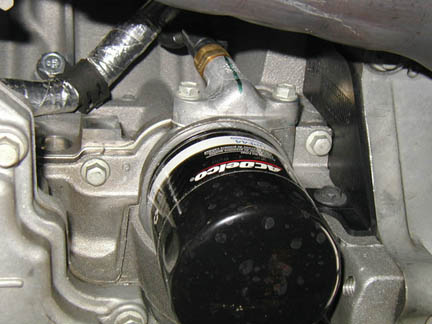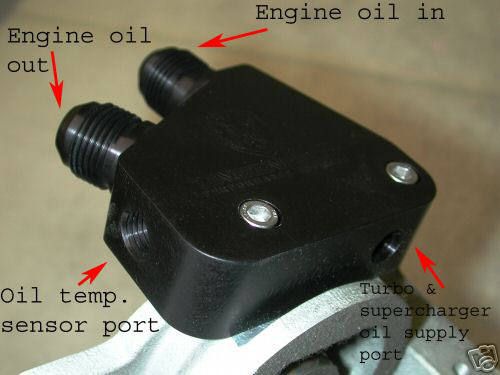Originally Posted By: Gary Allan
...but I've never said a filter ONLY get to 2 PSID. I've stated that that's what you would see out of relief. Even WIX said that ..and they're as smacked arse as I am about it ...I guess.
I was being sarcastic when I asked those questions ... and to make you think and see try to see that the filter's PSID isn't always benign and low (ie, 2~3 PSID). I didn't really want an explanation for every one of them, but since you have I'll make a few select comments back at ya.
What's in red text above is a point we don't see the same. For one thing, WIX never qualified their "2 PSID" comment. I'm assuming they would mean on the "typical" Grandpa car driven like a Grandpa. That's all fine and dandy. You have locked into your mind that this is the way it always is ... and don't consider all the conditions that could give a potentially higher filter PSID.
Give WIX an email shout and ask them what the PSID would be on a PureONE if it was ran on a Subaru engine flowing 12 gpm of how 10w-40 oil. Ask them if they believe their filter with a 12~15 psi bypass would never be in bypass mode under high RPM use. See what kind of an answer they come up with.
Again, the one thing you keep on missing is that the filter PSID increases with increased flow volume (note - constant viscosity). If the oil is hot and viscosity is constant, the filter PSID will be maximum at the point the pump goes into relief. Because at pump relief point,
the pressure can not go any higher(ideally), and therefore the flow volume going down the filter/engine is the highest it can be at that instance in time.
Questions for you:
1)If the pump is not in relief, but 0.25 psi below its relief pressure of 100 psi (99.75 psi), and the flow rate at that point is 8 gpm with hot constant viscosity oil (all going thru filter/engine), then what is the flow rate going thru the filter/engine at the pump's relief pressure of 100 psi?
2)What is the flow rate going thru the filter/engine with this same oil at any RPM above where the pump went into relief pressure of 100 psi?
I do want you to answer these 2 questions though. This is one point were I don't think you are seeing things right.
With a fixed oil viscosity and a fixed flow resistance path, the flow volume is strictly a function of the pump output (ie, oil supply) pressure. Max oil flow always happens at max pressure for a given constant oil viscosity and fixed flow resistance - this is KEY. Once the pump goes into relief mode, the max oil flow going thru the filter/engine becomes a constant value - the rest (excess pump output) goes to the sump.
The flow volume going thru the filter/engine can only decrease once the pump goes out of relief and the supply pressure starts to drop. See the ideal pump "Pump Output vs. RPM" graph I've shown a few times (see below) - once the pump hits pressure relief the flow output remains maximized and constant due to the excess volume going back (shunted) to the sump. For some reason, you continually believe all filter PSID magically disappears the instant the pump hits pressure relief ... I can't believe you can't realize this.
Quote:
It may be true the the majority of oil filters on the majority of vehicles on the road only see a few PSID max with hot oil flow,
It's true for the majority of oil filters with COLD oil. It just requires them to not be in relief. Whatever resistance you imagine in the filter is trumped many times greater by the engine. Cold oil doesn't want to flow through it without tremendously higher pressures than it does hot. If you've got a high enough relief limit and a low enough volume, you will still see your 2PSID (or less) and the rest across the engine. [/quote]
Wait a minute. Didn't you just say that WIX made the comment that the filter pressure drop will typically will be 2 PSID with hot oil? Now you're saying with COLD oil?
Yes, I agree that with cold oil there will be much less flow due to the high viscosity trying to be forced down a fixed flow path. But many times we have agreed that cold start / cold running (more RPM than idle) situations are most likely where the highest filter PSID events and bypass events occur on most "normal vehicles". In order for the filter to go into bypass during a cold start / cold running situation, the PSID would have to be equal or slightly greater than the bypass setting ...
so we are typically talking 12~15 psi PSID needed for that to occur. Follow me here ... what gives with this 2 PSID with cold oil comment of yours?
It seems you start contradicting yourself after we get into the "rehash" / "round-n-round" mode.
Quote:
Whatever resistance you imagine in the filter is trumped many times greater by the engine.
Not always. It all depends on the "ratio of resistance to flow" factors between the filter and engine. As discussed earlier, if you have a small, highly resistive filter on an low resistance, free flowing, high volume pumped engine (Subaru thread), then you could certainly have a pretty large drop across the filter and not a huge drop across the engine. Yeah, it's not the "norm" ... but easily possible.












